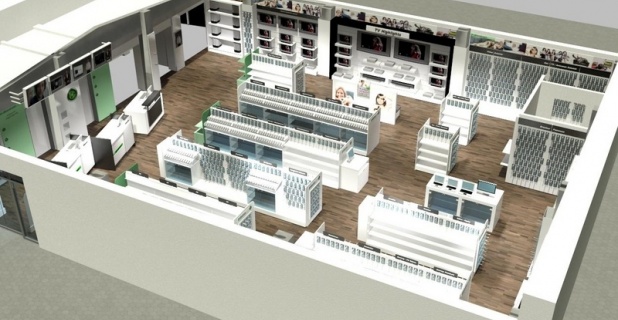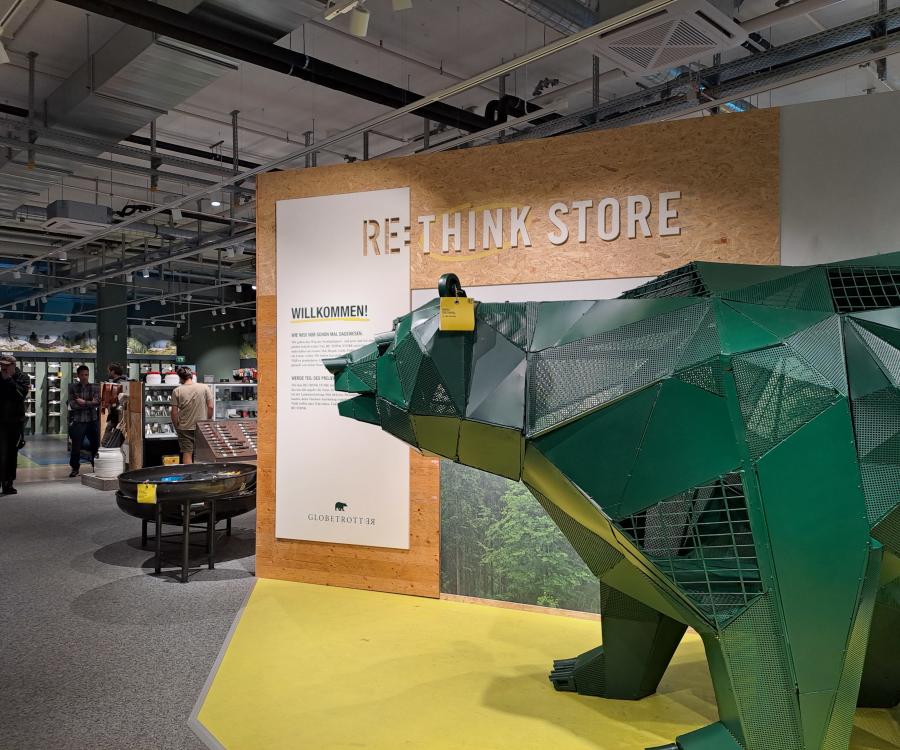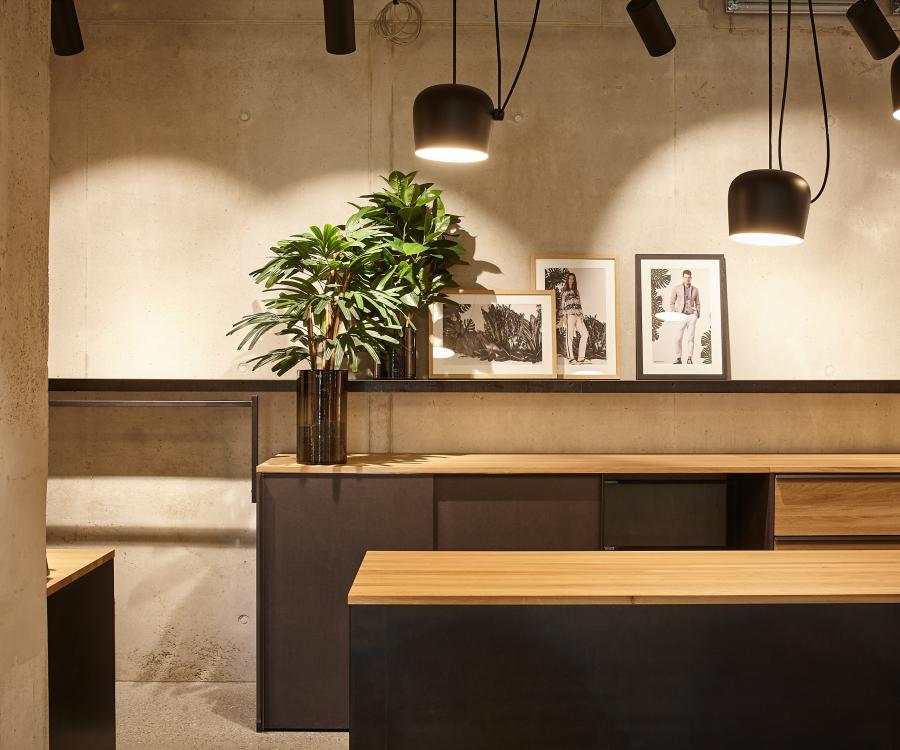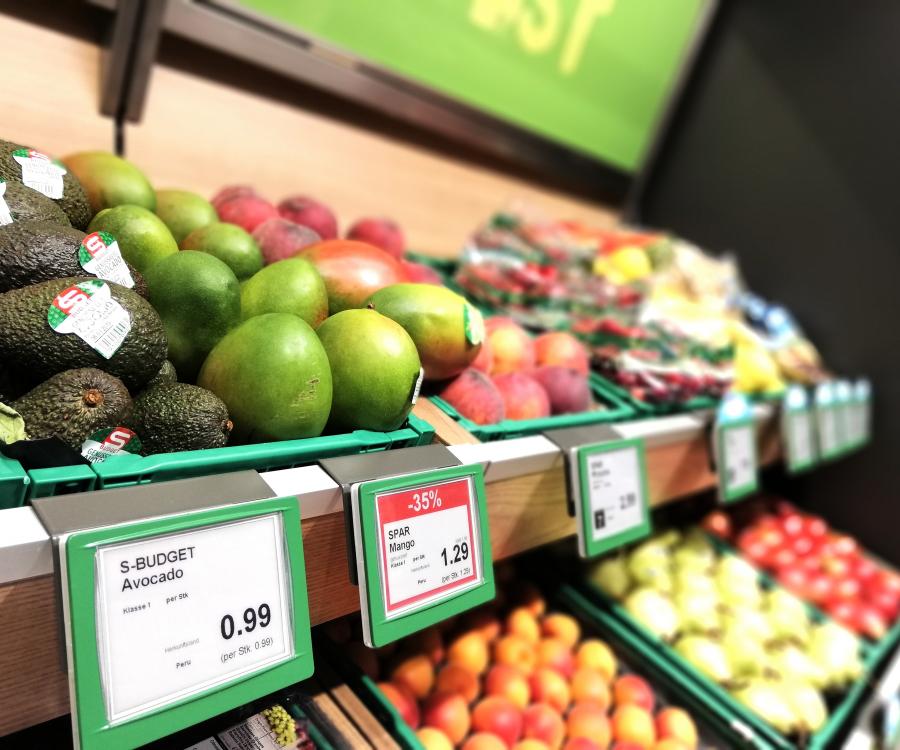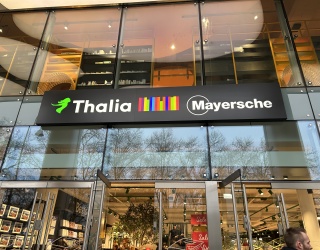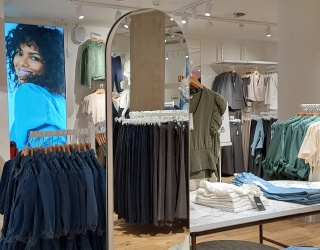Today’s stores no longer just have to stand up to comparisons with other retailers on location, but are also in a global competition thanks to the Internet. Merchandise and products are available anytime and anywhere thanks to modern mobile devices. However, furnishings and design of a retail store are by no means irrelevant; customers still want an individual and pleasant shopping experience.
Even if many retailers are now also online, the store remains an important component in the marketing mix. Through store design and store furnishings, central marketing messages can be directly communicated to customers. In addition, they are indispensable to create unique incentives to buy that differ from those on the Internet and from other competitors. Especially the true, haptic aspect of product experience is a key advantage, bricks-and-mortar retailers are able to use.
Stores keep being redesigned
One consequence of the intense competition is the constantly shorter remodeling cycles. Companies rely on highly flexible and modular store construction systems to not miss the boat compared to the competition. This means, individual parts have to be completely compatible with already existing standard products, so that they can be used without difficulty and facilitate the renovation and remodeling of the store with as little time and effort as possible.
Store furnishings are also essential for communicating a continuous corporate identity (CI), because it ideally creates high brand recognition, which turns the brand into an experience for the customer.
The dilemma between standards and individuality
Retailers however, are faced with a big problem: how can you create your own brand individuality, if a high level of standardization for the furnishings is mandatory due to costs? Many emphasize addressing individual customer groups through individual accents even within highly standardized store concepts.
The technical capabilities are multifaceted: digital media such as flat screens, video screens and kiosk systems complement traditional merchandising methods. Particularly in lifestyle-oriented industry sectors like fashion, sports and furniture, stories can be told and themes staged that emotionally appeal to the customer. This way, brand and products are better remembered. Another advantage of digital technologies is that quick new decoration is possible for specific campaigns without major effort. It always provides new impressions and shopping incentives without having to radically having to remodel the stores.
When looking at the current developments, one thing becomes apparent: the power shifts from the retailer to the customer. The customer is no longer limited to the choices provided by a local special retailer, but consciously decides where he/she buys. Retailers have already responded to this. In many cases, via showrooms, flagship stores, temporary stores or vending machines, additional channels are being created that are also being accepted by customers.
Emotions are key
Retailing is and remains a persuasion to buy. Many consumers still appreciate surprising shop productions and a haptic product experience even in industry sectors with a high online percentage, such as textiles and electrical equipment. This is why modern store concepts have to appeal to all customer senses and offer a real added value. Modern showrooms are not pure merchandise pickup locations. Ideally, they provide entertainment as well as social contacts. Customers are meant to be able to track down undiscovered items, look at products and try them. With a shop concept like that, retailers offer an experience, the customer would never find on the Internet this way.
The customer also wants convenience – convenience on the rise
So a successful retailer is one who turns shopping into an adventure for the customer? This applies more than ever today, but there are also exceptions. After all, mobile shopping on the Internet is a successful model, because many customers have less and less time and increasingly shop online. Especially during everyday shopping, they want to spend as little time as possible in the store.
Many retailers respond to the contrast between experience-oriented shopping and daily errands by setting up convenience stores. The focus here is very clearly on the convenience of customers. Especially products that can be immediately consumed are stocked in this type of store.
Large selection in a small space
Convenience stores require a completely different product presentation than shops where everything is geared towards the creation of experiences and the emotional level of the customer. This is why they also make very different demands on shopfitters. The customer needs to be able to get a quick general idea of the offered products. This is why a narrow and flat range of products is preferred. A limited showroom means that as many products as possible have to be presented in a small space. A clear arrangement in particular plays an important role with customers, because a long search is often being perceived as time-consuming. However, since stores are generally not being used for large purchases, a small number of respective articles are sufficient.
On the opening of the REWE to Go store in the Cologne Central Station, Lionel Souque, Member of the Managing Board of the REWE Group and in charge of REWE supermarkets in Germany, also emphasizes how important site selection and product range planning are. ”With this concept, we use our core competence of fresh foods and offer customers an attractive and quick alternative for on-the-go shopping – whether it is during shopping, your lunch break, on your way home or while waiting for your connection. The train station is an ideal location. It is among the most heavily frequented rail junctions in Germany, where tens of thousands of travelers pass through daily.“
Social trends influence store design
More than ever before, retailers today have to worry about which target audience they want to reach and which channel enables the best and most direct sales approach in certain cases. However, modern shopfitting does not just cater to the customer, but also to the purchasing situation and the type of products. In any case, digital presentation media and a comprehensively arranged, modular shopfitting concept facilitate a perfect target audience adaptation of the store and quick remodeling to support special sales campaigns. With a direct focus on the customer and his/her needs, store design creates emotional buying incentives and effective need satisfaction, which online retail is not able to offer customers this way. After all, sales promoting emotions are still best created directly at the point of sale.
Daniel Stöter, iXtenso.com

